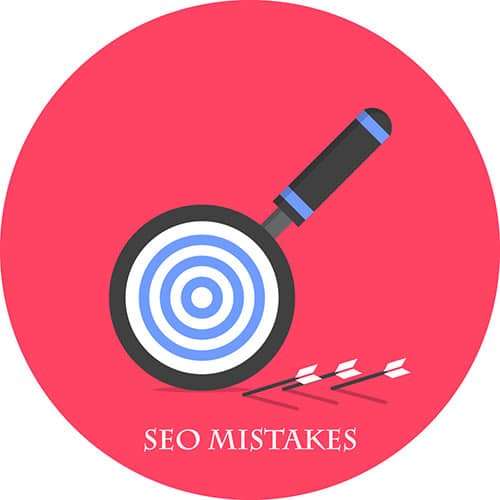You have probably heard the adage “content is king” when it comes to SEO. As Google’s crawlers get better at understanding what is written on a page and gauging value of that content, the quality of your content plays a larger role in how visible your website is in the results page.
Google has stated that the lowest quality content is that where “very little or no time, effort, expertise, or talent/skill” has gone into its creation.
If you are new to SEO, there are some pitfalls that you should avoid when creating content for your website.
Copying Another Site’s Content
This is easy and straight forward. DON’T STEAL CONTENT. Content on another website is not yours to put on your website. It will not help you. In fact, too much stealing and your site will get dinged by one of Google’s content updates, like Panda, which looks for instances of duplicate content.
Something that we have seen webmasters do is start a website, steal another website’s content, and change a few words so that the content is only a 99% match with the competitor, instead of 100. While this may have worked in the distant past, if you do this now, you will see limited to no results, and your website(s) will be vulnerable to a potential content related update that wipes out the rankings you had.
Google considers the following to be copied content (Source: https://static.googleusercontent.com/media/www.google.com/en//insidesearch/howsearchworks/assets/searchqualityevaluatorguidelines.pdf):
- Content copied exactly from an identifiable source – Sometimes an entire page is copied, and sometimes just parts of the page are copied. Sometimes multiple pages are copied and then pasted together into a single page. Text that has been copied exactly is usually the easiest type of copied content to identify.
- Content that is copied, but changed slightly from the original – This type of copying makes it difficult to find the exact matching original source. Sometimes just a few words are changed, or whole sentences are changed, or a “find and replace” modification is made, where one word is replaced with another throughout the text. These types of changes are deliberately done to make it difficult to find the original source of the content. We call this kind of content “copied with minimal alteration.”
- Content copied from a changing source, such as a search results page or news feed – You often will not be able to find an exact matching original source if it is a copy of “dynamic” content (content that changes frequently). However, we will still consider this to be copied content.
If you see your competitors writing about a certain topic relevant to your website, write your own content about that topic. You can use the same facts they use, but it should be in your own words.
Any website that has valuable content that is credible, useful, and informative, should have content that is unique. “Show your site’s credibility by using original research, citations, links, reviews and testimonials (source).”
Keyword Stuffing / Absent Keywords
If you are trying to get a page to rank for “Wool Mittens”, that term should appear around the page. Google expects that a page that is targeting a keyword will talk about that keyword throughout content on the page. The issue that we see webmasters make is that they tend to go too far in using the keyword or not using the keyword at all. Keyword stuffing can be as
Some webmasters, not paying attention to SEO, will write their meta tags, headings, and content, using the main keyword maybe once or twice. We have seen some examples of webmasters not using the keyword they want to target anywhere on the page.
On the other hand, we have seen content that is overly optimized for a keyword phrase, using it in every sentence and multiple times in the meta tags. Content this optimized is clearly written for the search engines and not for users, as the content tends to be repetitious and not saying anything of real value to a user.
The best practice for writing content that is optimized for a keyword is to use it once in the heading tag, once in the description, and have it appear throughout the page content in a way that is natural. If you are talking about “wool mittens” and you have 300 words of content, you may only need to have the main keyword 2-3 times.
The result of the content should support the primary keyword, but does not need to mention the exact phrase “wool mittens”
The content should be aimed at users, not search engines.
Blocks of Text
People tend not to read whole pages of content. There are exceptions, but on the whole, when people land on your website, there is a purpose. The faster you meet that purpose, the more likely that person will engage with your website. This will have a positive improvement on your site’s metrics, as well as rankings.
Large blocks of text can have a negative impact on the usability of a webpage, even if the content itself is strong. When a user sees a wall of text, they instantly make a time/value judgement about whether to engage with the page. If that judgment is too high, users will abandon the page and go somewhere else.

There are several things you can do to improve on blocks of text:
- Break Up the Content: Instead of one large paragraph, break up the content into 1-3 sentence chunks. You can use headings to break up content further. These changes lower the amount of time a user feels they have to commit, which improves engagement.
- Use Engaging Elements to Present Information – Instead of detailing statistical data in text, you could build a chart. An image can be a good way to visualize what you are talking about and can expand the interest in your content. A video is something can be utilized to further expand your audience and engage users that do not want to read. All of these added to a page raises it’s value for both users and search engines.
- Use Lists – Lists can be another good way of breaking up information in a way that highlights key points.
A strong webpage has a combination of these elements. The takeaway to keep in mind is to avoid walls of written text, as this can turn users off.
Depending on your niche and the search query, the type of content that people expect will be different. On a product listing page, 100-150 words are enough, as users are mainly there to look at the products. On an information page, 1000-1500 words may be the expectation.
What is important is that your content contributes an added value for the user and is not written for the search engines.
Too many webmasters fall into the trap of writing content that they think search engines will like, without considering for a moment that there may be an actual person reading it. Then, they wonder why their site does not rank.
Quality content means content that meets the user’s intent. That is what Google is looking for and that is what you should keep in mind when writing content.



